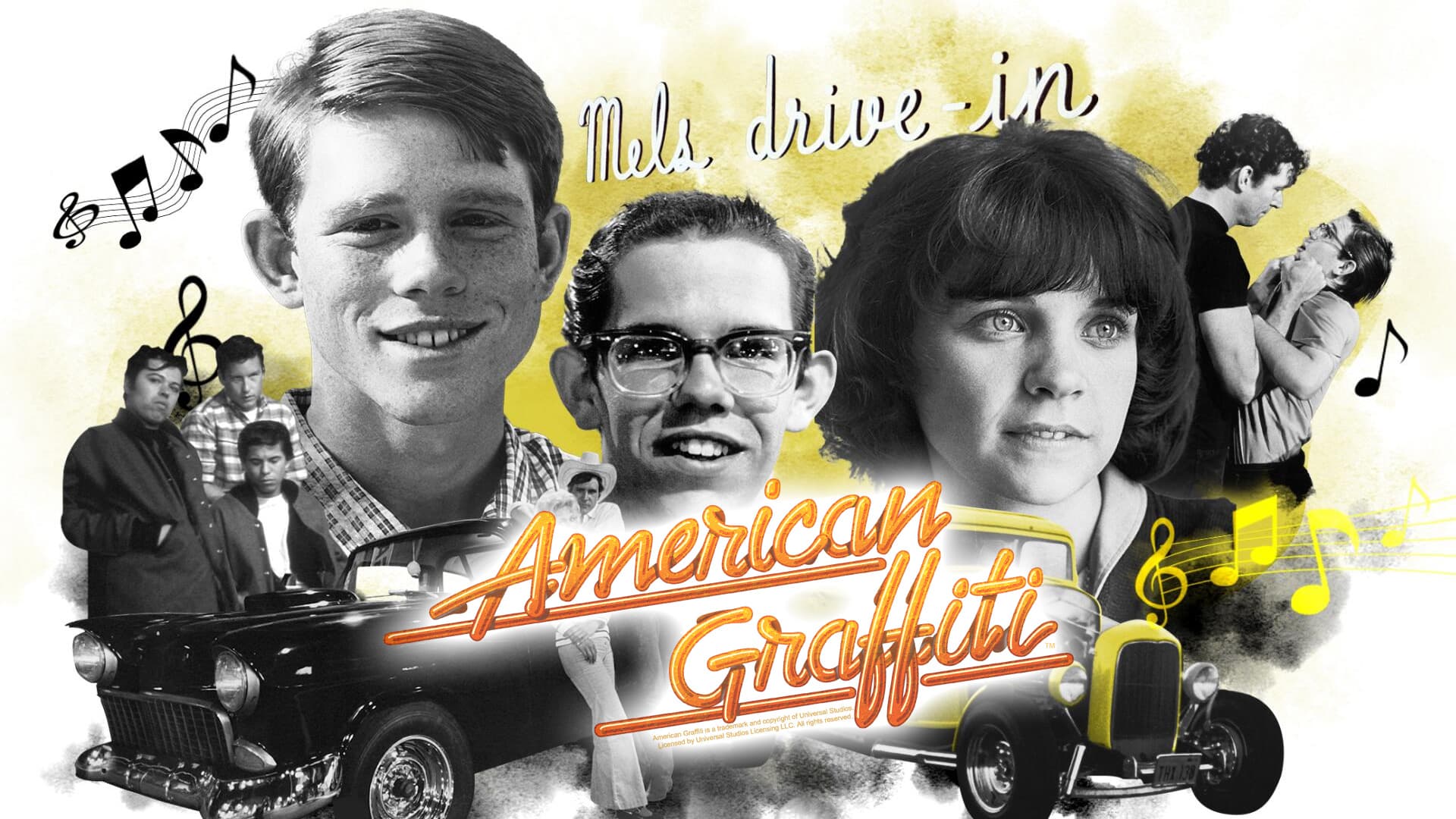American Graffiti Review : A Nostalgic Look at 1960s Youth

A Nostalgic Ride Through the Golden Age of Youth
American Graffiti, a film released in 1973, is a coming-of-age classic directed by George Lucas years before he touched upon the brilliance of Star Wars. Nostalgically, the film invites an audience to relive the early 1960s, encompassing teenage life, rock and roll, and uncertainties of growing up.
Among its casts are the likes of Richard Dreyfuss, Ron Howard, and Harrison Ford. Due to such a stellar cast, the movie remains one of the most influential teen films ever made. But does it stand up to date? Let us check out the reasons for watching it, its shortcomings, and whether it made a mark or fell flat.
What’s Great In American Graffiti?
There are innumerable reasons that make American Graffiti a film that everyone should see even decades after the time of its release.
A Timeless Coming-of-Age Story
Basically about youth, identity, and becoming an adult, the film centers on a group of teenagers during their last night together before an uncertain future for some for college; therefore it becomes hyper-relatable for anyone who has had to face life-altering decisions. This film experiences themes of nostalgia, self-discovery, and the passage of time that are relatable across all generations.
Capturing the '60s Perfectly
The film is a love letter to early 1960s America-from vintage automobiles to bright diner life. The cinematography and production design make you feel entirely immersed in an era built on hot rods, rock 'n' roll music, and rebellion for the young.
Fantastic Soundtrack
Sound is paramount in American Graffiti. The film boasted an incredible soundtrack of more than 40 classic rock-and-roll hits from artists like Chuck Berry, Buddy Holly, and the Beach Boys. Unlike more modern films that rely on a composed score for atmosphere, American Graffiti uses existing songs to create a sense of 'realness' with time.
Breakout Performances and Strong Cast
The movie features early performances from future Hollywood legends such as Harrison Ford and Richard Dreyfuss. Ron Howard shines in the role of the conflicted teenager uncertain about his future; he would go on to become one of the most successful directors in Hollywood.
Noteworthy Storytelling
Unlike being depicted via a single storyline, American Graffiti shows multiple characters facing their own dilemmas in an interwoven plot. This gives the movie a sort of kinetic, upbeat feel, manifesting the very unpredictability of youth.
Loopholes Discovered In American Graffiti
American Graffiti remains a classic despite its minor shortcomings as a motion picture.
A Slow Pace for Modern Viewers
American Graffiti progresses at a slow pace due to its distinct departure from the current trend of fast-editing and high-level action found in modern movies. American Graffiti centers its story through characters and dialogue rather than high-stakes events so it might slow down audiences who expect contemporary storytelling methods.
Limited Female Perspectives
All the main male characters experience profound growth throughout the story but the film displays lesser complexity in developing its female characters. The supporting roles in the story appear only for romance and companion duties in a way that modern viewers may consider unbalanced. The film would have benefited from an equally developed perspective between the story elements.
No Major Conflict or High Stakes
The story about teenage experiences in American Graffiti does not involve dramatic on-screen conflicts as typical in other coming-of-age movies. The absence of an intensive main conflict within this nostalgic film can potentially lead viewers to lose interest.
The public reception of American Graffiti produced an incredible financial success.
Although the production cost only $777,000 it managed to amass more than $140 million globally.
- American Graffiti received five Oscar nominations including Best Picture and Best Director among them.
- The film assisted in launching the professional paths of George Lucas and Ron Howard and Harrison Ford by leading to additional well-known classics.
American Graffiti created an enduring impact that motivated multiple filmmakers to make Dazed and Confused (1993) and Happy Days and launched the careers of George Lucas and Ron Howard and Harrison Ford. Nostalgia-driven storytelling in American Graffiti became successful proof that such narratives could have lasting power resulting in more films creating retrospectives of historic periods.
Conclusion
American Graffiti creates a timeless nostalgic cinematic masterpiece by showing us the mystical nature of adolescence and companionship with transformations. Viewers seeking cinematic excellence should watch American Graffiti because its true 1960s period feel meets compelling music with believable storylines.
Pace and lack of high-stakes dramatic elements might be turn offs but the film permanently changed how cinema evolves. All fans of classic automobiles and iconic rock music and viewers interested in mature youth stories will find something remarkable in this film.
You should definitely watch American Graffiti because the film allows viewers to experience a nostalgic look at the 1960s era.
